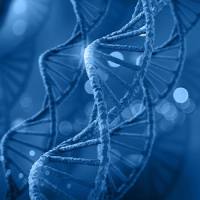Genome-wide screens have proven powerful in associating gene products with certain phenotypes or signal transduction pathways, and thus are valuable tools to ascribe gene function. These genomic screens can be extended to discover genes/proteins that attenuate oxidative stress-induced damage, which is implicated in aging, neurodegenerative disorders, and other diseases. One mechanism by which humans protect themselves from oxidative stress is through an endogenous stress response that leads to transcriptional activation of the antioxidant response element (ARE). The ARE is located in the 59-flanking regions of many phase II detoxification and antioxidant enzymes such as NAD(P)H:quinone oxidoreductase 1 (NQO1) and regulates the expression of these genes. Increasing the levels of antioxidant enzymes without causing oxidative stress can potentially counteract degeneration and may be therapeutically useful. On a genomic scale, ARE activators can be identified by screening expression cDNA libraries in a high-throughput amenable reporter gene assay. Further validation of putative hits requires testing of cDNAs for their ability to upregulate the expression of endogenous ARE-regulated genes on the transcript and protein levels, and their ability to protect cells from oxidative insults. General screening procedure and subsequent hit validation are discussed in detail.






